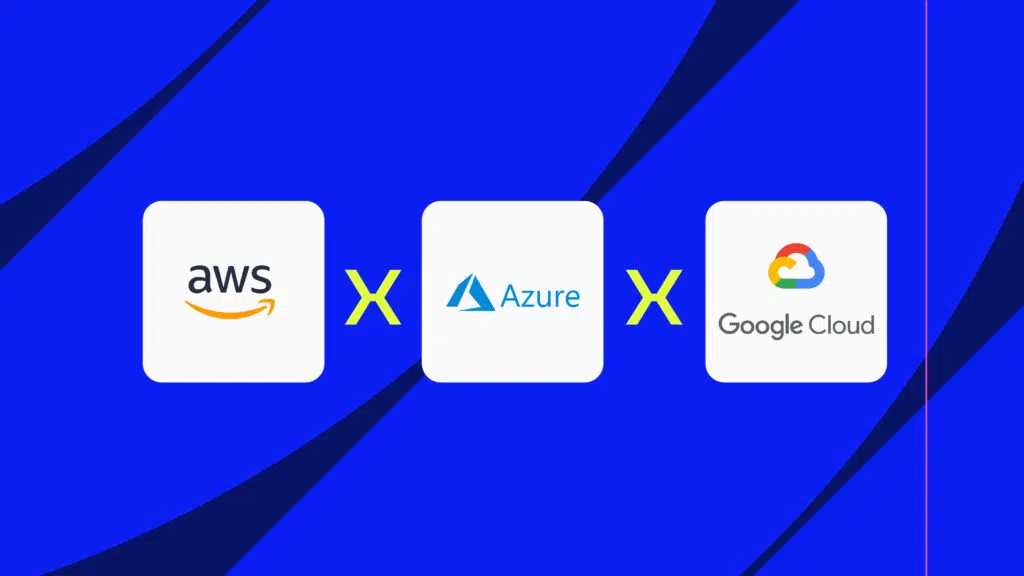In recent years, migration to the cloud has emerged as one of the main trends in the business world, promising to transform the way companies operate, store data and deploy their applications.
According to Gartner , cloud computing is 40 times more economical compared to internal IT structures, and 70% of companies that adopt the cloud already foresee an increase in their future budgets.
However, for many business leaders and decision makers, the transition to cloud computing is still shrouded in doubt , particularly regarding the cost and complexity of the process.
In this context, it is common to ask questions such as: “Is migrating to the cloud really economical for my business?” or “How can I ensure the transition will be smooth and without operational disruptions?”
Therefore, in this article, we will demystify these questions and offer a clear view of what migrating to the cloud really involves, and how companies can prepare for this very important transition in the technological world.
Stay with us!
What is cloud migration?
It is the process of moving digital assets, such as data, applications, and other IT elements from an on-premises , or from one cloud to another. Thus, this procedure is a central piece in modern companies' strategies to achieve greater efficiency and technological agility.
What is its importance for companies?
For any company, migrating to the cloud is an essential strategic move. It not only provides scale and flexibility to adapt to market demands, but also offers possibilities for cost optimization , improving the performance and security of your data and applications.
Furthermore, by utilizing artificial intelligence ( AI) in the cloud environment, companies can gain insights and improve decision-making. Thus, a well-planned migration strategy allows organizations to take advantage of the cloud's 100% potential while minimizing the risks associated with the transition.
The main challenges faced by companies before migration
Before migrating to the cloud, companies may encounter some obstacles that need to be meticulously assessed and overcome for the transition to be safe and effective. Check out what they are:
Initial cost and ROI
The initial investment for cloud migration can be significant, requiring detailed planning to assess return on investment (ROI). Organizations must consider not only infrastructure costs, but also expenses related to disrupting operations during the move.
Data security
Data protection is a central concern for companies adopting public or private cloud. Determining how to encrypt them, control access, and establish security policies are crucial steps to mitigating breach risks.
Integration of legacy systems
Many companies grapple with the complexity of integrating legacy systems with new cloud platforms. These systems may not be easily compatible with cloud-based infrastructure, which can slow down processes.
Regulatory Challenges
Data security and privacy regulations, such as the Brazilian LGPD, impose strict obligations on companies. Assessing and ensuring compliance is essential to avoid penalties and preserve corporate reputation.
Cultural resistance
Internal resistance can arise when the company tries to evaluate new technologies. Organizational culture can be a major challenge, where cloud adoption requires changes to traditional processes and employees' mindsets.
Continuous cost management
After the initial migration, managing costs on an ongoing basis is vital. Adapting to scalability and constant analysis to optimize cloud resources are essential to keeping expenses under control.
Team training
Equipping teams with sufficient cloud knowledge is another challenge. Comprehensive training is required to enable employees to manage and operate workloads and applications on the new infrastructure.
After all, is migrating to the cloud expensive? Understand the cost x benefit relationship
The cost of migrating to the cloud depends on several factors, including planning, long-term savings, flexibility provided, existing infrastructure and the company's workload.
However, this migration can be more economical than maintaining a local infrastructure ( on-premise ) for several reasons. First, the cloud eliminates the need for significant investments in hardware and physical infrastructure, which can be especially costly for companies that need to scale quickly.
Additionally, in the cloud, the pay-as-you-go model allows companies to pay only for the resources they consume , which can lead to substantial savings compared to the fixed cost of constantly maintaining and updating their own equipment.
Another point is that the management and maintenance of cloud infrastructure is the responsibility of the service provider, reducing expenses with internal IT teams and minimizing costs associated with downtime and system maintenance.
The agility and flexibility offered by the cloud also allows for faster response to market changes, which can result in competitive advantages and cost savings in the long term.
To better illustrate, see below a comparative table of typical aspects of a local infrastructure ( on-premise ) and a cloud-based infrastructure:
| Local Infrastructure (On-Premise) | Cloud Infrastructure (Cloud) | |
| Initial investment | High (purchase of hardware, software , etc.) | Low (usually a pay-as-you-go model) |
| Scalability | Limited (depends on physical capacity) | High (features can be adjusted quickly) |
| Maintenance | User responsibility, staff costs and spare parts | Included in the service, managed by the provider |
| Updates | Manual and potentially expensive | Automatic and continuous, at no additional cost |
| Operational cost | Predictable, but generally higher due to maintenance, power, etc. | Variable, but potentially lower due to resource efficiency |
| Capital Expenditures (CapEx) | Significant, due to the need for investments in fixed assets | Reduced, as the infrastructure is rented and paid for as an operational expense (OpEx) |
| Operating Expenses (OpEx) | Smaller relative to CapEx, but still include ongoing energy, cooling and personnel costs | Larger relative to CapEx, but generally more predictable and scalable with use |
| Business Continuity | It can be challenging and expensive to implement redundancy and disaster recovery | Facilitated by geographic redundancy and disaster recovery options from cloud providers |
| Safety | It depends on the investment and expertise of the internal team | Strong, with cloud providers offering |
Factors that can affect cloud migration costs
The transition to cloud platforms such as Azure, AWS and Google involves several factors that directly impact the cost. These range from the scope of the migration project to the choice of provider. Look:
Scope of migration
The scope defines the scope and objectives of the migration. A larger project involving numerous services and applications will require more resources, resulting in higher costs. On the other hand, projects with a limited scope or involving smaller physical servers may be more cost-effective.
Data volume
The size and volume of data to be transferred has a significant impact on costs. Therefore, companies must consider not only the initial cost of transfer, but also the ongoing cost of cloud storage.
Data type
Data types affect the complexity and, consequently, the costs of migration. Sensitive or regulated data requires additional security and compliance measures, increasing spending.
Application architecture
Applications that require a complex architecture or that require refactoring to adapt to cloud-based services can make the process more expensive. Performance and scalability are also factors to consider.
Choosing the service model
Cloud service models like IaaS, PaaS, and SaaS have different cost structures. Therefore, the choice between these models directly influences operational costs and the control that the company will have over services.
Choice of provider
Finally, the choice of provider is crucial. Prices between providers such as AWS, Google Cloud Platform and Azure can vary, each offering different pricing structures for storage, services, and machine performance power. Thoroughly analyzing the options available can result in substantial savings.
5 ways to optimize costs and make cloud migration quick and easy
One thing is certain: migrating to the cloud not only modernizes IT systems, but can also result in significant savings and increased efficiency, if executed strategically .
Below, we present five approaches focused on optimizing costs and agility for companies moving toward cloud computing.
Efficient planning
A well-developed migration plan is key to a successful transition. Determining which applications will be moved and which cloud services are best suited for them will result in a more fluid process . Including validation at each stage of planning can anticipate problems, save resources and time, and avoid rework.
Choosing the right infrastructure
A focus on the organization's specific needs makes it possible to make an assertive choice of infrastructure , which involves everything from selecting IaaS (Infrastructure as a Service) to PaaS (Platform as a Service), including using microservices to increase scalability. Thus, an adequate infrastructure aligns with performance and cost requirements, driving migration effectiveness.
Gradual vs. gradual implementation mass migration
Deciding between gradual implementation of applications and mass migration to the cloud will depend on the organization's profile and ability to absorb changes. Gradual implementation allows for finer tuning and targeting of resources, while bulk migration can be more effective for less complex systems and where time is a critical factor.
Autoscaling strategy
Using automation and autoscaling strategies, you can ensure that your cloud infrastructure adjusts to changing demands efficiently. Autoscaling optimizes costs by adjusting resources precisely, avoiding spending on idle capacity or shortages during peak usage.
Continuous monitoring and optimization
Continuous monitoring is vital to detect optimization opportunities and proactively manage costs. Recommendations based on usage and performance analysis allow you to continually refine cloud operations. Applying IoT techniques for data collection and analysis can reveal insights for this process.
Skyone: your best migration partner
When we talk about migrating to the cloud, choosing a partner with expertise is crucial. We, at Skyone , are a specialized company that offers personalized and efficient cloud solutions, aligned with the needs of each client.
Through our unique platform , the migration of your company's assets to the cloud occurs quickly and securely, allowing your IT team to focus on what matters most: your business !
Come find out how we can boost your journey to cloud success!
Conclusion
As we have seen throughout this article, migration to the cloud represents a significant transformation in business processes, encouraging innovation and ensuring greater scalability.
Additionally, it is critical to understand that this transition can involve a variety of environments, including private cloud, hybrid cloud, and other configurations, each serving specific business needs.
Continue your journey of knowledge by checking out our complete guide on migrating to the cloud!




